Types of heating systems for your home explained
There are so many types of heating systems that an overview with expert insight is essential to work out which one is right for you
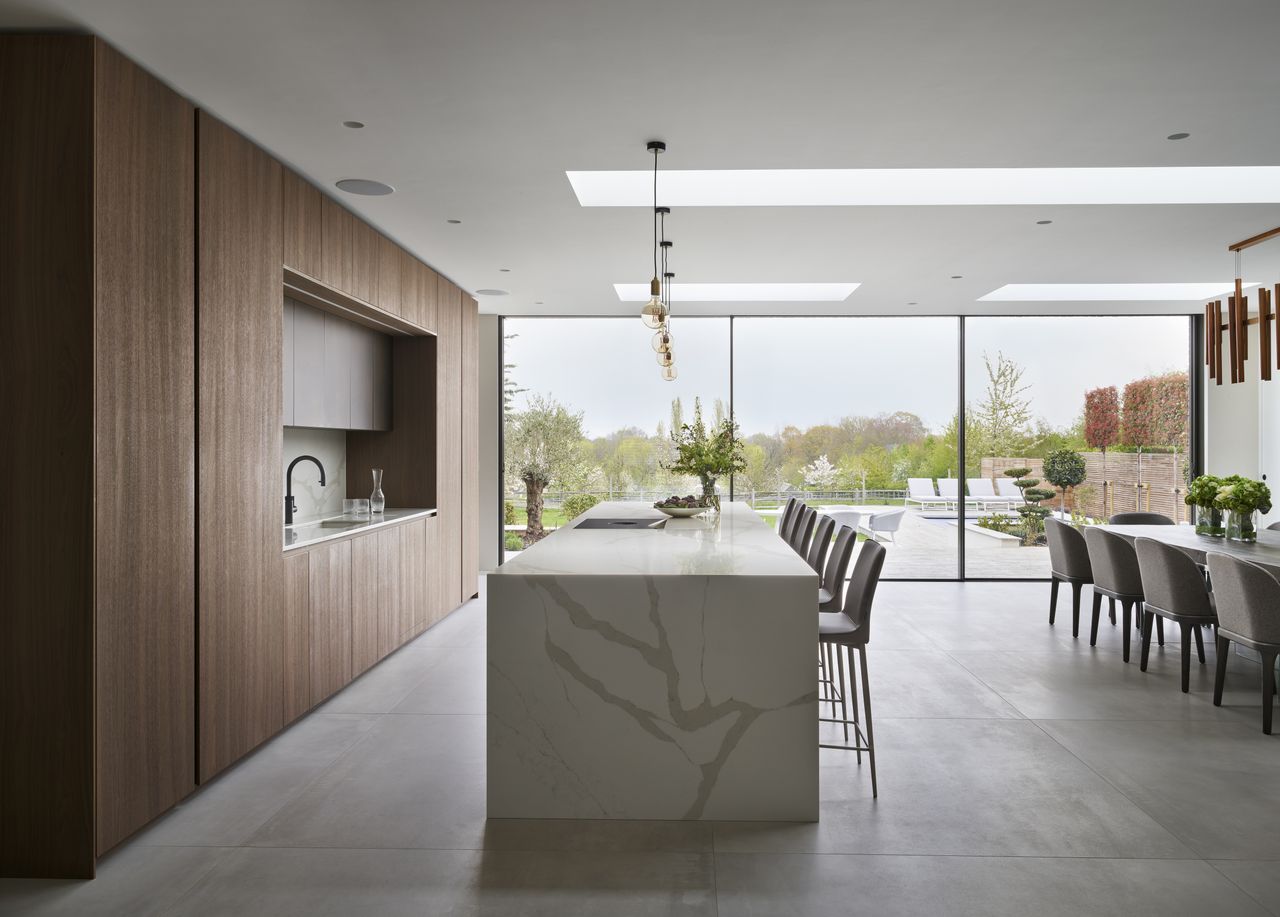

Types of heating has become a hot topic recently. From the increase in energy bills to the rise in demand for sustainable heating, it seems to be all anyone is thinking about. And by looking at the different types of heating systems available, you may be able save on heating costs and consider the environment too. With efforts to reduce carbon emissions and tackle climate change, there has been a lot of talk recently about gas and oil boilers being phased out by mid 2030’s, to be replaced by a low-carbon heating system, heat pumps or hydrogen-ready boilers.
Where you live has a huge impact on the heating system you choose, as some fuel sources may be harder to get - natural gas for example. If you live in a remote area and are off-grid, (not connected to the national mains supply) the most common heating alternatives include LPG (liquid petroleum gas) and oil boilers, biomass boilers, solar thermal panels and heat pumps.
The size of your home is also important, how many people live in the house? How many bathrooms are there? so take advice from an expert as to the best solution for you and your family. In the UK, where there is a lot of old housing stock, you often inherit a heating system, so it needs to be checked more regularly, and if necessary upgraded. In a new-build property, it’s possible to choose the kind of heating you want from the get-go, so look at the options and discuss it with your contractor.
“Central heating is one of our most in demand categories with almost 20,000 consumer searches every month," says Mike Fairman of Checkatrade. ‘Yet there is real confusion amongst the public when it comes to which heating sources they should commit to, especially with the green heat initiative and the phasing out of natural gas boilers. The publication of the government’s impending Heat and Buildings Strategy should set out clear advice.’
It was announced this week that homeowners in England and Wales will be offered subsidies of £5,000 from next April to help them replace old gas boilers with low-carbon heat pumps.
The U.S. Department of Energy (DOE) has released its 2021 Climate Adaptation and Resilience Plan, an aggressive agenda to adopt agency-wide strategies to manage the short- and long-term effects of climate change in DOE’s operations.
TYPES OF HEATING DISTRIBUTION SYSTEMS
Before going into specifics, it helps to understand the basic components of heating systems and how they work. Each heating system has three parts:
Heat Source – the heat source could be a boiler, furnace or heat pump. The heat source provides warm air or water for heating.
Heat Distribution System – this moves the warm air, steam or hot water throughout the home
Control System – this is usually a thermostat and controls the heat distribution. Increasingly Nest, Hive or other apps are being used that can be activated from your home hub or smart phone and are intuitive, so could help you to save money.
Boilers are the most common form of heating in the US and UK. They distribute hot water or steam through pipes to your home’s radiators, floor heating systems or coils. Energy efficiency can be 50% - 90% depending on the boiler’s age. A boiler should last between 15 – 30 years.
Different Types of Boilers
The different types of boilers are combi, system, regular, electric, and hydrogen-ready.
1. Combi boilers
Combi boilers produce both heating and water on demand without the need for a water cylinder. They are a good solution for smaller properties thanks to their compact size. Andy Kerr, founder of smart home systems installer, https://www.boxt.co.uk/ says ‘Combi boilers are the most common and are ideal for houses with up to 4 bedrooms. The main consideration to think about with a combi boiler is how much hot water you need. A basic boiler will give you 10 litres a minute whereas a high output boiler will give you up to 22 litres a minute. The main thing to remember is that you must have enough water pressure to run it.’
2. System boilers
System boilers are ideal for homes with multiple bathrooms where hot water is in high demand. ‘A system boiler contains many of the components pre-plumbed and pre-wired so its straightforward to link up,' says Martyn Bridges of Worcester Bosch. 'It will provide fully pumped heated water to the radiators and the hot water cylinder and you won’t need for a tank in the loft.’
3. Regular boilers
A traditional boiler, this uses a hot water cylinder as well as a cold water storage tank, usually in the loft space. It’s a good option for replacing existing older boilers without updating the entire central heating system. Martyn Bridges of Worcester Bosch says ‘A regular boiler is one of the simplest - and therefore reliable - boilers you can buy, and is ideal for older systems as the low pressure within does not incur any leaks to older radiators and pipework.’
4. Electric boilers
Electric boilers can be floor or wall mounted. There is no need for water tanks or cylinders so they are smaller and therefore take up less space. They have a life span of around 20 years.
5. Hydrogen-Ready Boilers
The date for the introduction of hydrogen-ready boilers has been brought forward to 2023/4. These boilers will run on existing natural gas but have the ability to be adapted if the local gas network changes to hydrogen, which is currently set to be implemented after 2030.
Are gas boilers being banned?
Gas boilers are not being banned, it's just that the introduction of new ones will be banned from 2023. One of the most common misunderstandings around the ban is that people who already have gas boilers must change them before the 2023 deadline - but this is wrong, as the ban only applies to boilers being installed in new homes. The International Energy Agency (IEA) guidance hasn’t been put into place for existing boilers yet, so there is no need to worry in the short term.
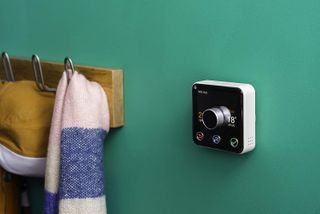
Hive Active Heating Thermostat
Types of heating systems for smart homes
Linking your heating to a Google Nest or Hive, instead of a traditional thermostat could save you on average up to 16.5% a year on your heating bill. ‘More and more people expect to control their heating from a smartphone or by voice activation, with a huge uptake in the last 3 years,' says Andy Kerr of Boxt. 'It means you can control your heating remotely, if you go away for example, or switch the heating on before you get home from work.’
Smart home heating systems work with your current heating system, and usually have to be installed by a professional.
FURNACE OR STEAM BOILERS
Most US homes are heated with either furnaces or boilers. Furnaces heat air and distribute the heated air through the house using ducts or vents. They are very quick at adjusting the temperature of a room, and in the summer months air conditioning can share the same system. A furnace’s energy efficiency can range from 59% - 98.5% and will need replacing within 15-30 years.
Boilers heat water, and provide either hot water or steam for heating. Steam is distributed via pipes to steam radiators, and hot water can be distributed via baseboard radiators or radiant/underfloor systems, or air can be heated via a coil. Steam boilers operate at a higher temperature than hot water boilers, and are inherently less efficient, however, high-efficiency versions of all types of furnaces and boilers are currently available.
FORCED AIR SYSTEM
Forced air systems are by far the most popular HVAC system (heating, ventilation and air-conditioning) in the US. These systems move warmed air from a furnace through air ducts and vents to various rooms of the house. They are very quick at adjusting the temperature of a room and air conditioning can share the same system. A furnace’s energy efficiency can range from 59% - 98.5% and will need replacing within 15-30 years.
AIR SOURCE HEAT PUMPS
Air source heat pumps can be used for heating and cooling the home. They pull heat from the surrounding air outside for heating. There are two different types of ASHPs: air-to-water and ground source and air-to-air. Depending on which one you choose, determines the type of heat distribution you need. They have been much in the news lately, mainly due to the Net Zero emissions targets which need to be achieved by 2050, and finding other ways to heat our homes that doesn’t rely on gas, heat pumps are seen as a good alternative. The efficiency is 6.8 – 10 HSPF (heating seasonal performance factor) A heat pump should last for around 15 years.
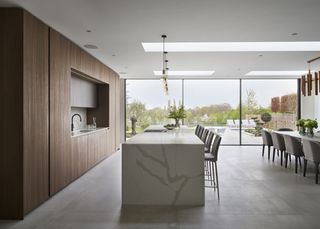
Scheme by Design Studio London, featuring underfloor heating
UNDERFLOOR HEATING
Underfloor heating heats objects, materials and people rather than just the air. It is most commonly used for floors, but can also be fitted as ceiling and wall panels. It is installed using a system of pipes that distribute hot water from a boiler, or by electric wiring underneath the floor, similar to an electric blanket, and can work with many floor types. Radiant systems provide comfortable, even heat and when heated by boilers, can be very energy efficient.
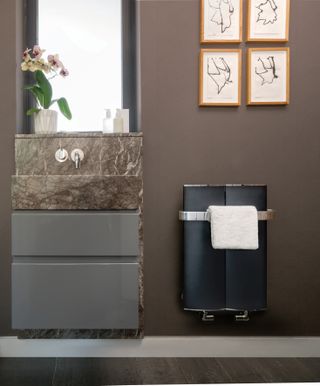
Lisset heated towel rail by Bisque
WOOD BURNING AND PELLET STOVES
Wood burning stoves have really taken off in recent years, for their good looks and efficiency at heating your home. If you have a fireplace already, then its relatively straightforward to think about wood burner ideas. The simplest way is to use an inset stove which will slot into a standard fireplace opening without major building work to open up the fireplace. You will probably need a flue, which can be expensive, but it will make the stove burn more efficiently and safely. Wood burning stoves have a high heat output and will use fewer logs because the heat is contained, unlike an open fire, but remember the stove will get hot, so always use fire-retardant gloves when using it, don’t stack logs too close to it and don’t leave anything on top. It’s important that stoves are ventilated properly and regularly cleaned.
There has been a lot of talk of banning wood-burning stoves, especially in cities because of air pollution. However, the UK government has stated they won’t stop the sale of wood or coal burning stoves, but ‘polluting fuels’ are being banned. This means that logs must be properly dried or seasoned before use which can take up to a year. Kiln-dried logs are just that, so they can be used straight away. Importantly, these logs have a typical moisture content of 15%, the lower the moisture content of your firewood, the more heat is produced as less energy is used to evaporate any remaining moisture. This means more heat for your room and less smoke and steam going up the chimney, which means cleaner air for everyone.
It’s advisable to buy a carbon monoxide detector too.
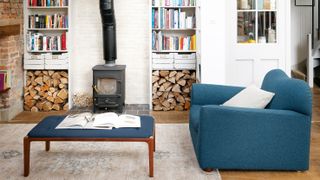
WOOD PELLET STOVES
Wood pellet stoves have become more popular as they convert biomass or wood pellet fuel - made up of recycled wood waste or sawdust - into heat with very little smoke, helping the environment. When linked up to a biomass boiler, wood pellet stoves can be totally programmable and thermostatically controlled, unlike a wood burner. You can burn wood pellets in a standard wood-burning stove too.
FIREPLACES
Open fires look and smell wonderful, and speak to our most basic instincts, but they are not the most efficient heat source. They will heat the room, but a lot of heat is lost up the chimney. It has also been said that open fires can release up to 10 times the amount of harmful emissions as a wood-burning stove.
When thinking about fireplace ideas, remember that an open fire will need maintenance - make sure the chimney is swept once or twice a year and check the chimney lining is regularly inspected, your chimney sweep should be able to tell if there are any problems. Burn only seasoned or kiln-dried wood and think about a bird guard on the chimney top to stop birds nesting there.
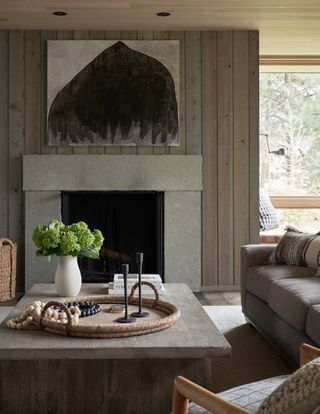
ACTIVE SOLAR HEATING
There are two types of solar energy for domestic use – Solar Photovoltaic (PV) and Solar Thermal, both of which use panels, usually on the roof.
Solar PV is the newer of the two and is either grid-connected or stand alone. Grid-connected means any excess electricity you create can be fed into the National Grid through an inverter and should you need more electricity than your solar panels have generated, the grid can supply this. Stand alone systems are not connected to the grid but instead charge a solar battery. These batteries store the electricity generated by your panels for your own use for lighting, heating and water heating. This system is typically more expensive than grid-connected systems because solar batteries are still quite costly, costing around $2000 or £1,5000.
‘Solar PV is very effective in powering electrical heating, can reduce bills and emissions and lets you control the energy that flows through your home,' says Neal Goddard of Solarwatt. 'This system also pairs well with other technologies such as electric charging (EV) for a car.'
Solar Thermal systems main use is water heating. They produce heat not electricity. When heated by the sun, the fluid contained in the solar thermal panels is pumped to a heat exchanger inside the water tank before flowing back to the panels for reheating. This type usually works in conjunction with a gas or fuel central heating system that starts working when the temperature in the water tank falls below a certain temperature. These systems can provide hot water all year round, even in cool climates.
To encourage people to install solar thermal heating, as a key step towards sustainable living, the UK Government introduced The Renewable Heat Incentive (RHI). Currently payments are made for 7 years and are based on the amount of renewable heat created by your heating system.
The life expectancy of a solar heating system is 20+ years.
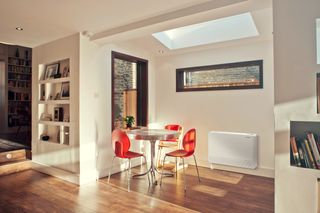
Electric heater by Mitsubishi
ELECTRIC HEATERS AND RADIATORS
Electric heaters and radiators are seen to be an efficient and green choice. Electric heaters are easy to install and virtually maintenance-free. They are also a more flexible option as you can adjust the temperature from room to room, according to your needs. The system is simple to program and is a reliable, often cost-effective alternative to gas central heating. There are a huge range of products from budget panel heaters to premium infrared panels. ‘Homeowners are looking for more stylish designs than the old panel-style electric radiators,' says Steve Birch of Vogue Radiators. 'So more styles are being introduced, including classic column-style radiators which are available in many RAL colors to enable you to customize your space.’
ELECTRIC OR NIGHT STORAGE HEATERS
Night storage heaters are less popular than they used to be because they are not deemed to be that efficient. They are usually found in older properties, apartments or where there is no mains gas. They work by heating up internal ceramic bricks during the night, then the heat is released during the day. The benefits are they are exceptionally quiet and easy to install.
PORTABLE ELECTRIC HEATERS
Portable electric heaters may be an affordable solution if your main heating system doesn’t work that well or for when the heating fails. Portable heaters are particularly useful if you just want to heat one room, which is why they often get folded into home office ideas, rather than heating the whole house.
‘Some heaters use convection which warms the air in a room first and then you begin to feel the warmth, others use radiant heating which warms people and objects first, and faster,' says Chris Michael of Meaco. 'Make sure that whichever heater you choose has a thermostat so that it turns itself off and doesn’t waste energy, or better still has a motion detector so it only works when someone is in the room.’
PORTABLE OIL-FILLED RADIATORS
These heaters can also be stand-alone and have an internal reservoir of liquid. They are quiet because there are no fans or blowers and can offer excellent energy efficiency. They are also durable and need little maintenance. However, the heaters must remain unobstructed which can cause problems with placing furniture. They can also be slow to warm up.
ELECTRIC BASEBOARD OR SKIRTING HEATERS
These skirting board heaters absorb cold air from the ground and use convective heating to circulate warm air around your room. They are good for conservatories and low walls. Some come with a remote control so you don’t have to bend down to turn them on or can be controlled via an app. A 1kw heater will cost $0.10 or £0.06 an hour to run.
HOT WATER BASEBOARD OR SKIRTING HEATERS
A hot water baseboard, or hydronic heater uses heated water, or sometimes oil, via a boiler to circulate through a system of pipes. The heat is then radiated out via thin metal fins surrounding the water pipe.
OFF GRID HEATING SOLUTIONS
LPG AND OIL BOILERS – If you aren’t connected to mains gas, then LPG (liquid petroleum gas) is one of the options. It has to be delivered by road and is stored in a tank. It is normally used in a ‘wet’ system where an LPG-fired boiler heats water, which provides central heating through radiators and hot water to the taps in your home. LPG is a highly efficient fuel but the price of LPG fluctuates in comparison to heating oil or gas. Also you may have to buy or rent your storage tank from your supplier which will add to your annual running costs.
BIOMASS BOILERS – Biomass is a renewable energy source generated from burning wood, plants and other organic matter, such as manure or household waste. This powers the central heating and hot water system. It does release carbon dioxide when burned, but considerably less than fossil fuels. There can be grants available to help with installation - see above.*
Be The First To Know
The Livingetc newsletter is your shortcut to the now and the next in home design. Subscribe today to receive a stunning free 200-page book of the best homes from around the world.
Alison Davidson is well-respected British interiors journalist, who has been the Homes Editor of Woman and Home magazine, and the Interiors Editor for House Beautiful. She regularly contributes to Livingetc, and many other titles, and often writes about kitchens, extensions, and decor ideas. She is the go-to for information about green energy, sustainable home improvement and eco design ideas.
-
 Meet 'Stacey' — A Pale Gray, "Spill Proof" and Washable Rug That is the Secret to Throwing Stylish Soirées
Meet 'Stacey' — A Pale Gray, "Spill Proof" and Washable Rug That is the Secret to Throwing Stylish SoiréesIs the risk of red wine putting you off buying that beautiful cream rug you've always wanted? Rugs USA has a solution
By Maya Glantz Published
-
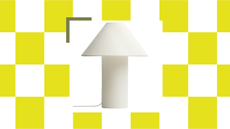 Every 'Quiet Luxury' Devotee I Know Is Buying This Beautiful Bouclé Lamp From H&M Home
Every 'Quiet Luxury' Devotee I Know Is Buying This Beautiful Bouclé Lamp From H&M HomeBouclé can be somewhat of a contentious fabric these days... but on a table lamp? Now that's a bright idea I can't overlook
By Maya Glantz Published